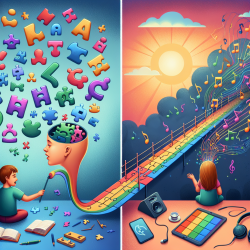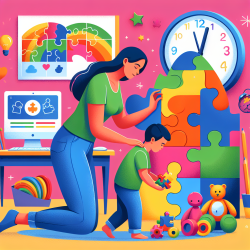In the realm of pediatric speech and language disorders, both dyslexia and stuttering present significant challenges. Despite their apparent differences, these conditions share intriguing similarities in their pathogenesis, epidemiology, and impact on life. A recent comprehensive review titled "Dyslexia and Stuttering: An Overview of Processing Deficits and the Relationship Between Them" provides critical insights that can help practitioners improve their therapeutic approaches.
Understanding the Connection
According to the review, both dyslexia and stuttering are classified as processing deficits, impacting the ability to process speech sounds efficiently. The study highlights several shared characteristics:
- Genetic Factors: Both conditions have a genetic basis, with genes such as FOXP2, GNPTAB, and DRD2 implicated in their development.
- Anatomical Similarities: Functional neuroimaging studies suggest that abnormalities in the left hemisphere's language networks are common in both disorders.
- Epidemiological Trends: Both conditions show a higher prevalence in males and share similar risk factors, including family history and prenatal environmental influences.
Clinical Implications
Understanding the shared underpinnings of dyslexia and stuttering can inform more effective therapeutic strategies. Here are some key takeaways for practitioners:
- Early Intervention: Early diagnosis and intervention are crucial for both conditions. The study emphasizes the importance of addressing speech and language deficits as soon as they are identified.
- Multidisciplinary Approach: Combining speech therapy with cognitive-behavioral therapy (CBT) has shown promise in managing stuttering. Similarly, individualized educational programs (IEPs) and multisensory instruction are effective for dyslexia.
- Technology-Based Interventions: Emerging evidence supports the use of technology-based therapies, such as virtual reality and biofeedback, in managing both conditions.
Encouraging Further Research
While the current review provides valuable insights, it also underscores the need for further research to explore the relationship between dyslexia and stuttering more deeply. Future studies should aim to:
- Identify additional genetic and environmental risk factors.
- Explore the efficacy of new therapeutic interventions.
- Investigate the long-term outcomes of combined therapeutic approaches.
By continuing to investigate these areas, we can develop more targeted and effective treatments, ultimately improving outcomes for children affected by these conditions.
To read the original research paper, please follow this link: Dyslexia and Stuttering: An Overview of Processing Deficits and the Relationship Between Them










